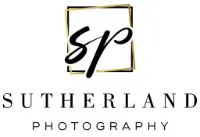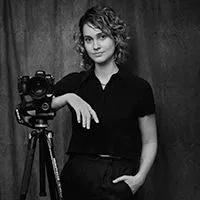Whether you sell products online or you leverage digital marketing to promote products you sell from a brick-and-mortar store, high-quality product photography – along with great product descriptions – is crucial for boosting sales. Often, product photos are the first visual impression a potential customer gets of your brand, and blurry, unprofessional-looking photos don’t send the message you want to convey. But as any amateur photographer who simply picked up a camera one day and decided to snap a few photos, taking visually pleasing photos that showcase your products is easier said than done.
When you get into the many details involved in taking better product photos, it’s easy to get overwhelmed and not know where to begin. To help you get started on the path to top-notch product photography, we reached out to a panel of photographers and digital marketers and asked them to answer this question:
“What’s your number one product photography tip?”
Meet Our Panel of Photographers and Digital Marketers:
Keep reading to learn what our panel had to say about their top tips for taking high-quality, professional product photos.
David Wurst
David Wurst is the Owner and CEO at Webcitz.
“When shooting products, it’s important to use the proper aperture. Of course, this is true for any other industry. However, many people aren’t diligent enough with their settings. Product photography is divided into two categories: lifestyle and studio. The widest aperture (lowest f-stop) is best for product lifestyle images. It ensures that the product is the focus of everyone’s attention. All of the other elements should merge together to create a creamy bokeh. Make sure you’re shooting from a far distance away from the product. This will help in the separation of the product from the backdrop by increasing the depth of field.”
Adam Wood
Adam Wood is the Co-Founder of RevenueGeeks.
“Maintain a clean studio. Dust has the potential to ruin expensive equipment and waste production time while it is being repaired. Here are a few cleaning tips:
- Establish the studio in a room that is empty and close to the products.
- If you must be in the main area, situate the studio away from the facility’s traffic.
- Maintain a regular cleaning schedule for the studio.
- Maintain your photography gear with care.”
Jay Bats
Jay Bats is the Co-Founder & Developer at ContentBASE.
“Incorporate color theory. The color theory explains how humans perceive color and how to use different color combinations to balance an image or evoke specific emotions in viewers. Many photographers use color theory in their product photography to emphasize a specific idea or characteristic that clients or consumers may find appealing. Learn about color theory to help you come up with aesthetically appealing color combinations.”
Maggie Sutherland
Maggie Sutherland is a St. Louis photographer specializing in family, newborn, and maternity portraits.
“My number one product photography tip is to keep it simple! Don’t add props if they don’t make sense. And if nothing makes sense with the product and nothing fits with your brand, just don’t add anything.”
Stephen Light
Stephen Light is the CMO and Co-Owner of Nolah Mattress, an eCommerce brand.
“As an eCommerce brand owner who’s also a marketing leader, my biggest eCommerce photography tip is to keep things consistent when photographing products to make sure that brand messaging never suffers. Strong branding relies on cohesion, and consumers are far more likely to trust and invest in a brand whose product photos convey a streamlined identity over an eCommerce store with photography that looks like it was pulled from multiple sources.
Absolutely play around and have fun with the format, style, light, and everything else that makes a good photo, but make sure that when you choose your final product photos that they all look like they’re part of the same family, and that the brand is clear and strong.”
Marc Stitt
Marc Stitt is the Chief Marketing Officer (CMO) of FMX, a company that allows organizations to manage work orders, plan preventive maintenance, manage assets and inventory usage, track staff and equipment performance, schedule events, and more.
“Try some macro shots. Always keep in mind that the majority of macro photographs will most likely be utilized in conjunction with standard product photography. They can, nevertheless, be an excellent addition to a series of photographs for, for example, a highlight page in a catalog or an eye-catching poster advertisement. Just make certain that your lighting is exceptional so that even the smallest details can be seen.”
Michael Butt
Michael Butt is the Vice President of Marketing at Verta.ai, an artificial intelligence based company.
“Incorporate an interesting background. Many product photographs adhere to the rule of a plain background in order to draw attention to the product or to incorporate another image into the background. Placing the main product in the foreground of a set with a distinctive background and props may truly enhance attention and perhaps increase the desire for a product.”
Adam Fard
Adam Fard is the Founder & Head Of Design at Adam Fard’ UX Agency.
“Play around with styling. You should experiment with your photography even when photographing something inanimate. This is the time to experiment with styling because it is easier than working with people. Try different accessories and backgrounds that fit the product’s concept, such as shooting a flat lay photo. Don’t forget to create a visually appealing environment.”
Oliver Walsh
Oliver Walsh is the Co-Founder of ASYSTEM, a science-backed company whose aim is to make self-care easy.
“My best tip for eCommerce product photography is to shoot against a clean white background and use natural light whenever possible. You can also use props to add interest and context. Try shooting your products in different settings and configurations, and pay attention to the details. Lastly, experiment and find what works best for your specific product, and edit your photos for optimal impact.”
Ryan Yount
Ryan Yount is the founder of LuckLuckGo, a site for GPS protection tools.
“Center the product and soften the shadow. Shadows can be distracting in product photography, and often they clash with your vision of the photo due to the nature of lighting. Lighting up the side of the product you are photographing may cast a distracting shadow on the opposite side. You can eliminate this shadow through a light fill or flash and standalone bounce cards. If you are using natural light, you can use a shear to reduce the harshness of the light. Alternatively, you can use a reflector to bounce back the light towards its source.”
Elisa Bender
Elisa Bender is the Co-founder of RevenueGeeks.
“My number one product photography tip is unorthodox yet very effective; it incorporates learning the rule of thirds. A professional photographer has every bit of basic and complex knowledge of visualization and rules of taking a picture. Most art and photography schools lay emphasis on great photography through the rule of thirds and dividing your canvas into nine equal segments, which act as the basic requirement to photograph a specific object.
It may come as a surprise, but the rule of thirds was invented to aid artists in capturing balanced and aesthetic compositions. For a passionate photographer, there should be nothing more essential than finding the right balance and developing an unrivaled focus. Product photography is the epitome of still photography that uses the rule of thirds more often than we can imagine. The aim is to keep the product between the segment lines rather than in the center.
Product photography becomes art when we use important rules like segmentation and the rule of thirds.”
Aviad Faruz
Aviad Faruz is the CEO of Faruzo.
“A product’s picture is the first thing that customers interact with when they visit your eCommerce website. My photography tip would be to place the product above a reflected surface which would add depth to the picture.
You can also opt for photo manipulation to reflect the image on a body of water. This technique could be successfully achieved by placing the product in a shallow pan filled with water. You can further use different colored lights in the background to help put a focus on the product’s aesthetic and appeal.”
Alex Williams
Alex Williams is an eCommerce business owner, a Certified Financial Planner, and the CFO of FindThisBest, a comprehensive guide for shopping retail products.
“My number one product photography tip is to use a tripod. Many photographers consider tripods unnecessary pieces of technical equipment, but in reality, they make a huge difference in the quality of your product photography.
They stabilize your camera from your shaky hand, leading to blur reduction. And we all know that blurry images are a no-go when it comes to product photography.
Whether you are using your iPhone, an Android, or a fancy DSLR, there are numerous tripods available in the market for every type of camera. It’s totally worth it to shop for one and take the extra time to set it up for higher-quality product photographs.”
Paul Baterina
Paul Baterina is the Chief Operating Officer at Sleep Advisor.
“Garbage in, garbage out. There’s only so much that Cathy, our graphic designer, and Photoshop can do with bad product photos!
If you take a terrible product photo, you shouldn’t expect a graphic designer or Photoshop to magically improve its quality.
So, try to take the best shots for the best product photos. White uniform backgrounds and ample lighting is more than enough to ensure a great photo. Anything more is overkill.”
Brian Mellin
Brian Mellin is the Founder & CEO of Joe 2.0 Coffee.
“Never use real photos. 3D Renders will be higher quality 100% of the time, and they’re much cheaper to produce. For reference, all of the product photos on our website are 3D renders.”
Cassandra Highbridge
Cassandra Highbridge is the CRM Engagement Marketing Specialist at Unstack.
“Make sure you have great lighting for your product photos. You can have the best camera in the world, but if the lighting is off the whole picture can look terrible. This doesn’t mean you need to have the best lighting equipment. It can be as simple as utilizing natural light and taking into account light placement. 22 percent of returns happen because a product looks different in person than in photos, so it’s important that customers see an accurate picture of the product.”
Gabriel Dungan
Gabriel Dungan is the CEO and Founder of ViscoSoft, an eCommerce business that’s been helping people sleep better since 2007.
“Product photos are a crucial part of marketing and are the best way to show your audience what your brand is all about, especially for eCommerce businesses. My top product photography tip is that all product photos on your site should look uniform.
Even though you are selling different products, you don’t want each product photo on your site to look completely different from the next. This could cause your business website to look messy and also make it more difficult to navigate through large numbers of products. Product photos are representative of your brand, so you want to make sure all design and composition choices are consistent.”
Virginia Kluiters
Virginia Kluiters is a NYC-based fashion and fine art photographer working with brands and publications to produce dynamic commercial and editorial work. She has a passion for bold color combinations and creative lighting. Her photographs can be found in publications including Paper Magazine, Cosmopolitan Slovenia, Elle Bulgaria, Glamour Bulgaria, and more.
“These are my top tips on product photography:
1. A great lens to use for product photography is a 50 mm, as it mimics what the human eye sees and doesn’t cause too much distortion of the subject. A 100 mm lens is also a great investment for product macro shots since it allows you to get close ups of details. And in a pinch, an 85 mm lens is a great substitute for a 100 mm!
2. In beauty and jewelry product photography, it’s always helpful to have a white flat nearby to use for bouncing light. This will fill harsh shadows and flatter the product. It’s also a good idea to keep ND paper on set to control the lighting and reflections on shiny products.
These tricks will allow you to shoot cleaner, more professional images.”
Shannon Serpette
Shannon Serpette is the Editor at The Design Home.
“When shooting a product photo, remember to take plenty of shots. A good rule of thumb is that you might find one photo you love for every 10 photos you shoot. If you feel your pictures aren’t working, change the lighting – that can make all the difference.
It also helps show product details better if you use a background that is a contrasting color from the product you’re shooting.”
Jerry Han
Jerry Han is the Chief Marketing Officer at PrizeRebel.
“When you’re in the advertising business, you want to make sure you’re able to present your products the best way you can. I’ve found that behind every good photo is even better editing software. I love to use Photoshop because of its extensive tools and corrective brushes. It makes a beginner photographer like me look like a pro!
The downside of using editing software programs is the learning curve. It can take time to learn how to properly use these programs. If it’s in your budget, it would be a good idea to hire an editing team so you can focus on selling your products.”
Sam Shepler
Sam Shepler is the founder and CEO of Testimonial Hero, a 7-figure location-independent services business. He is a career entrepreneur with 1X previous acquisition. 150+ B2B revenue teams at Google, UiPath, Medallia, InsightSquared, and many others use Testimonial Hero to easily create customer videos that engage prospects, reduce friction in the sales cycle, and drive more revenue faster.
“Go outside and put your products into context. Yes, product photography is almost always shot at a studio; you can control the lighting, background, and elements best. You can even mimic some environments with creativity, but going outside and shooting your pics in different places will bring your products to life. It’s way better if you put your products into context, like at a beach or a mountain. This will make your pics way more interesting, and most importantly, they will tell a complete story that will draw more people to your product.”
Joe Richard
Joe Richard is the Founder and Chief Editor at Getpixie. Getpixie is responsible for tracking and maintaining the records of online social media news and trends. They cover a vast variety of topics through their articles.
“The two essentials of product photography are good lighting and background. Good lighting in product photography is a no-brainer. Average lighting can deteriorate the picture quality exponentially. In addition to that, I have not seen many people give enough importance to a good and basic background. A nice background can completely change the quality of the picture. Moreover, finding great backgrounds for product photography is easy. If nothing works, just add a solid colored background going with the color scheme of the product and you are good to go. So, make sure to have a good and smooth background going on.”
Sylvia Fountaine
Sylvia Fountaine is the CEO & Founder at Feasting at Home.
“My best advice is to shoot like you won’t be able to edit your photo. Amateur photographers or professionals rushing through a shoot may take some ‘ok’ shots and plan to edit them into perfection. Often, these sloppy shots are unusable even after the edit, and we take far longer trying to fix them in the edit than the time spent re-shooting.
Always shoot as if you’ll have to post the photo without any extra edits – if you can’t do that, you’re not done shooting. This will help you become better at product photography as you learn which angles and settings naturally show off the beauty of the product, then edit with small touch-ups to enhance, not fix.”
Anthony Martin
Anthony Martin is the CEO & Founder of Choice Mutual.
“Always make sure your product images are clear and sharp. You’ll build more trusting customers since blurry photos of products might have them doubting the quality of your business and/or the products you’re offering.
- When hiring a professional product photographer, don’t forget to inquire about the type of equipment they use.
- You’ll want to know if they’re capable of doing what you expect them to do based on their equipment, software, lens, and portfolio.”
Zachary Hoffman
Zachary Hoffman is the CEO at DigitalPR.com.
“One tip I suggest for clients who are really getting into product photography is to use a camera stand. While pricier than a tripod, these stands are also far superior – they can be bumped without causing an issue and don’t get in the way in the studio as much. They’re also durable, lasting years of heavy use, and can be easily adjusted, saving you time in the studio.”
The quality of your product photography plays a significant role in how well your product pages and landing pages convert visitors to buyers. Once you’ve taken the time to master the art of product photography, you’re ready to start showing off your products and growing your audience. Installing social media share buttons is an excellent strategy for getting your product pages in front of a larger audience. By enabling your visitors to share your product pages and other content on their favorite social media platforms with a single click, it’s a quick and easy (and totally free!) way to start building brand awareness and even making sales.





























